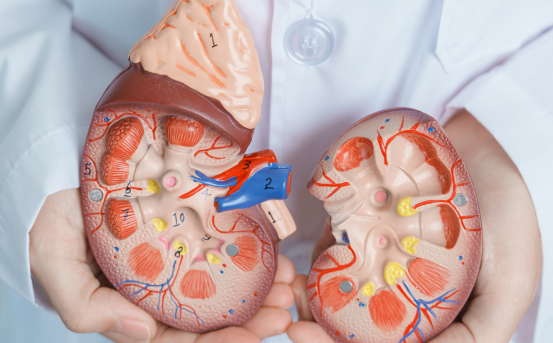Corpus Callosotomy is a surgical intervention for drug-resistant epilepsy, especially in children who suffer from atonic or drop seizures. The surgery involves severing the corpus callosum—the bundle of nerve fibers connecting the two hemispheres of the brain—to limit the transfer of seizure activity from one hemisphere to the other. Understanding of types of corpus callosotomy surgery.
This procedure is often surgically managed when, in addition to significant psychosocial distress, there is an active psychosocial disability (social and occupational) and injury-prone behaviors which are the result of uncontrollable seizures.
Reasons for Performing Corpus Callosotomy
Corpus Callosotomy is performed for more specific reasons like:
- Refractory epilepsy that does not respond to antiepileptic drugs.
- Frequent drop attacks resulting in falls and sustaining injuries.
- Seizures involving both hemispheres, known as generalized seizures.
- As a palliative approach when complete seizure control is deemed impossible, but reducing the severity and frequency of seizures is achievable.
This treatment does not cure epilepsy, yet it can enhance one’s quality of life by minimizing the severity of seizures and preventing hazardous falls.
Types of Corpus Callosotomy Surgery
Corpus callosotomy surgeries may be classified into three main types based on the amount of the corpus callosum that is cut:
- Partial Corpus Callosotomy (Anterior Two-Thirds Callosotomy)
Description:
This types of corpus callosotomy surgery is the most common. The anterior two-thirds of the corpus callosum is separated, which limits inter-hemispheric communication while still preserving some functions in the posterior part of the brain.
Indications:
- Children suffering from drop attacks (atonic seizures)
- Partial control of seizures is allowed
- Minimize potential cognitive side effects
Benefits:
- Significantly decreases drop seizure
- Compared to full callosotomy, there are fewer neurological side effects.
Risks:
- Some seizures may persist
- Postoperative disconnection syndrome
- Complete Corpus Callosotomy (Total Callosotomy)
Description:
This procedure is characterized by the total severing of corpus callosum, which includes both the anterior and posterior sections. Total callosotomy is a more aggressive approach and is often used following unsuccessful attempts at partial callosotomy.
Indications:
- Persistent seizures after partial callosotomy.
- Severe epilepsy with generalized seizures.
- More control required over seizure activity.
Benefits:
- Greater reduction in generalized seizures.
- May lead to substantial improvement in quality of life.
Risks:
- Speech and cognitive difficulties become more likely.
- Disconnection syndrome is more common.
- May impair coordination in relation to visual processing.
- Posterior Callosotomy (Rare)
Description:
This is the least common form and typically only done in rare or complex cases. It involves cutting only the posterior (back third) portion of the corpus callosum.
Indications:
- Special circumstances where posterior communication causes the generalization of seizures.
- Usually performed with other procedures or following a partial callosotomy.
Benefits:
- Targets specific seizure pathways.
- Preserves anterior functions which may be important for language and cognition.
Risks:
May be ineffective as a stand-alone procedure.
Relative lack of other clinical data compared to other types is concerning.
Corpus callosotomy is a neurosurgical procedure done under general anesthesia. The steps include:
- Craniotomy: A section of the skull is removed to gain access to the brain.
- Microsurgical dissection: A section of the corpus callosum is identified and cut using a microscope.
- Closure: The removed portion of the skull is placed back and the scalp closed.
Less invasive options, such as LITT and stereotactic techniques, are available as emerging therapies at select centers.
Recovery and Prognosis
- Hospital Stay:- Monitoring for seizures and other neurological functions requires close attention during this hospital period, which can last from 3 to 7 days.
- Rehabilitation:- Students may need additional support from occupational or speech therapists. Students also need sustained engagement with epilepsy and neurologist specialists.
- Outcomes:- In children with specific favorable types, better outcomes are achieved. Approximately 70% of patients have a significant reduction in drop attacks. Although seizure freedom is rare, it is achievable in some cases.
Risks and Side Effects
Each case of Corpus Callosotomy comes with the standard risk profile of brain surgeries, including:
- Hemorrhage or infections.
- Issues with memory and attention.
- Disconnection Syndrome: Difficulty with eye- and hand-coordination, speech, or information transfer across hemispheres.
- Hemiparesis (weakness on one side): May be temporary or permanent.
- Vision issues, though rare.
Making decisions with the surgical veterinarian and their neurologist requires diving deeper into these risks.
Conclusion
Patients, particularly children, dealing with uncontrollable epilepsy have corpus callosotomy as an effective surgical treatment option. Identifying the differenttypes of corpus callosotomy surgery—partial, complete, and posterior— enables more precise tailoring to the individual patient’s needs.
Although not a cure for epilepsy, this procedure can significantly alleviate the frequency and intensity of seizures, especially the injurious drop attacks. Continued advancements in surgical techniques and postoperative patient care are improving outcomes even further, making corpus callosotomy a transformative procedure for many families.























